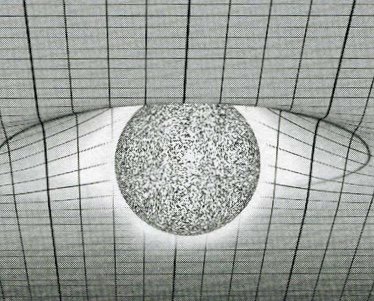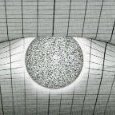-
Posts
11 -
Joined
-
Last visited
Content Type
Profiles
Forums
Events
Everything posted by b_alsept@alsept
-
Two post before you posted the classical Bell Graph, I described how a multiple polarizer (another quantum mechanical experiment) could explain (local realism) with real objects. The results of this experiment (which are not linear) are usually described as QM because no one can explain the (cos2theta) results classically. I show that particles can have (real properties) that explain the experimental results, agreeing with QM predictions and follow Malus Law/cos2theta which is shown in blue, on your graph.
-
All the talk of entanglement and spooky action at a distance creates confusion and distracts us from the real question. Why does the interference pattern form? One camp claims that particles are either going through both slits at the same time or two particles are (not correlated) but somehow magically entangled. The other camp claims the particles go through one slit only before being detected at the screen and their properties were already set from the start. Einstein was in this camp and his original thought experiment had nothing to do with entanglement but everything to do with correlation. He imagined two particles perfectly correlated or anti-correlated so that the speed, polarization, direction and linear dependency were exactly the same. Then you could later measure one particle and know everything about the other without disturbing it. Like I said the multi-polarizer experiment was not the same as the correlating two particles experiment but they both share the idea that a particle can (and does) have more properties than just polarization.
-
To explain something at the atomic level would take a lot more time and space than we have here, but it can be done. Because you asked, I'll show how adding a time dependent property to a particle, totally changes the probability of it passing a slit. You'll see it matches QM predictions. Malus Law or cos2theta is found just about everywhere in QM, including one simple experiment where particles are sent through multiple polarizers set at different angles. I realize this is not the double slit experiment but it does explain the effect that a time dependent property has on the chances of a particle making it through a slit. Instead of photons or electrons I'll use larger objects to help demonstrate this. Of course testing one particle/object would not be enough. I’m talking about testing thousands, at multiple set points. I could choose from hundreds of different objects but to be analogous and to make a point, let’s say the objects are 30cm-long throwing knives, 40mm tall and 5mm thick. Their properties include a few things such as: (1) Every knife is moving at the same speed and will reach the tester at the same time. (2) As they move toward the tester, they each rotate vertically end over end at the same RPM. (3) The tester/analyzers is a wall, with a 39mm wide slots which can be rotated to different set points ranging from vertical to horizontal. The knives are not in phase with some rotating to different angles when they reach the tester. When the slot is set to vertical, all knives will pass through but when the slot is set to horizontal, no knife can pass. If you rotate the slot five degrees from vertical, most of the knife's will still make it through but there's a slim chance the rotating knife will make contact with one of the slots edges. With the slot set vertically, all knives make it through, but at five degrees it’s obvious that the odds have been slightly reduced. When you set the slot to 25 degrees from vertical it becomes harder for a knife to pass through, but you can see that if the knife is rotated just right as it reaches the slot, it will. If the set point is at 85 degrees (not quite horizontal), then most likely the knife will not make it through but there's still a very slim chance that if the knife is pointed at the slot as it gets there, it will pass. After throwing thousands of vertically rotating/polarized knives at various set points ranging from vertical to horizontal you accumulate the results. The results will show that the number of knives passing through the slot is directly proportionate to the set point angle. More interesting is that the proportional results are NOT LINEAR. Instead you’ll find that they match Malus Law and cos2theta. Adding a rotation, pulse or some kind of oscillation (which would explain frequency) will explain how correlation (not entanglement) produces the interference patterns. we observe.
-
I'm talking about physically correlating two particles and sending them off to be tested later. Just by adding frequency which also adds linear dependency you can test millions of these correlated pairs (not entangled) so that the results will produce all the predictions of QM, matching Malus Law or cos2theta.
-
I agree with this. Photons that are detected anywhere along the trajectory will not make it to the screen and therefore not contribute to the pattern. The more photons you detect (remove from the experiment) the more the pattern goes away. You can have single slit interference which by the way comes from the overlapping of two single edge fringe patterns. Coherent photons through a double slit create the convolution of all four edges.
-
I realize Bell's theorem sets mathematical limits on two particles that are correlated by polarization only but particles have properties other than polarization. For example what about two particles that are perfectly correlated in speed, direction, polarization and rotating or pulsating at the same RPM or frequency. Now the measurements would become linear dependent. Bell's theorem wouldn't apply in that situation.
-
Yes but my point was how do you know they are entangled and not just correlated. For example, I could take what you said and change it to: "e.g. if you measure an electron spin up, you know its CORRELATED partner is spin down even though we did not have those spins prior to the measurement, just like all classical correlated system.
-
Hello, it looks like this conversation slowed down so I'm wondering if I can back up and ask some questions. I too enjoy this subject but have never quite understood all the hype, confusion and different interpretations. I for one am from the classic realm and like to think causal and classically as much as possible. My understanding is that all this entanglement talk started after or during the EPR discussions/debates. Einstein truly believed that a particles location and momentum could always be accounted for and didn't agree with the uncertainty principle etc. Einstein's original thought experiment involved perfectly correlating the spins of two particles and sending them off in two directions. His idea was that later you could check the spin of one and automatically know the spin of the other without interacting with it. I don't understand what entanglement is, if not correlation. What do you physically do to these two particles that isn't really just plain old correlation? Why do you need entanglement when correlation will answer all the questions? Anyway I do love this subject, Thanks Bill


